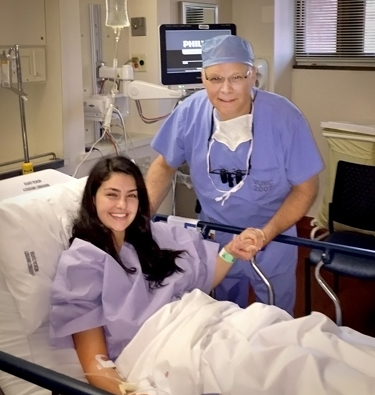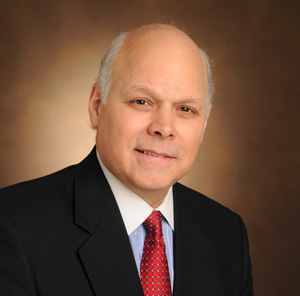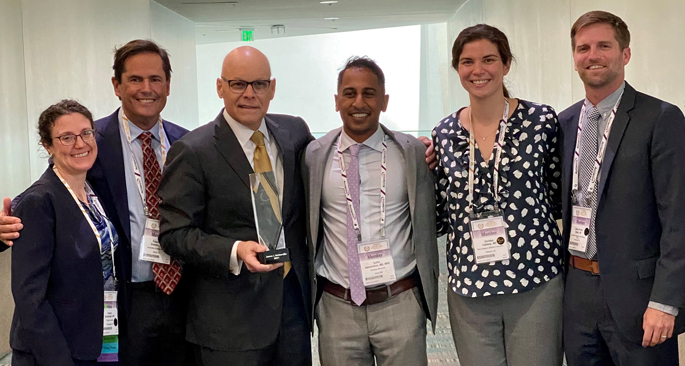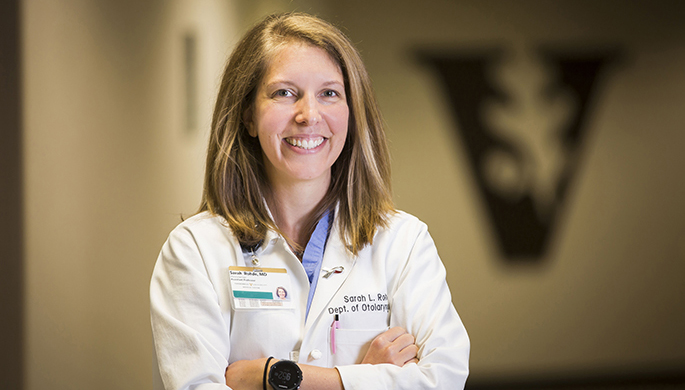Patients are coming to the Vanderbilt Bill Wilkerson Center from around the globe, discovering the center’s world-class services through social media. One such person is Sophia Pafitis, who traveled to Vanderbilt last year from the Australian island of Tasmania.

Pafitis, then 23, had a rare, non-cancerous head tumor called a sympathetic schwannoma, and came to see James Netterville, M.D., director of Head and Neck Oncology Surgery and an international authority on treating skull base tumors.
Netterville, the Mark C. Smith Professor of Head and Neck Surgery, Professor of Otolaryngology and associate director at the Vanderbilt Bill Wilkerson Center, uses a technique of removing the nerve-base tumors that preserves nerve function and can lead to a much better quality of life.
Pafitis learned about Netterville on a Facebook page about schwannomas, where Netterville’s work is often discussed.
“It became really apparent that there was this man in Nashville, and he was the best at getting the best results,” she said. “He was the most experienced, and he is without a doubt the best in the world for this tumor or anything in that region.”
Pafitis had a growth within the fibers of the sympathetic nerve, which regulates the body’s fight-or-flight system, Netterville said. When stimulating the superior portion of the nerve in the upper neck, the nerve opens a person’s eyelids, dilates pupils and causes facial perspiration to aid in escaping danger.
In past practice, surgeons would cut the sympathetic nerve in order to remove the growth, permanently affecting function. However, Netterville uses a technique —intracapsular enucleation — to trim the tissue around the tumor, preserving nerve function.
“It’s a difficult path to look for overseas surgeons,” Sophia’s mother, Anna Pafitis, said. “We did a lot of homework before choosing Vanderbilt. We looked for online communities about Sophia’s condition, looked for recommendations. The engagement of Dr. Netterville and all the staff in facilitating our visit made us all the more confident we had made a good choice. We felt welcomed and cared for beyond our expectations at every stage.”
Netterville said he sees about two new patients a month with these rare schwannomas on either the vagal and sympathetic nerves, and that social media has really changed how people find out about Vanderbilt.
“Due to the referrals of patients on this site, I often speak with patients from around the world with this particular disease,” he said. “The vast majority can’t travel to the United States and I try to find doctors in their region who are open-minded enough to do this procedure.”
None of this would have been possible without social media, Pafitis said.
“I have nothing but the highest praise for the facility and its amazing people, from my surgeons to my nurses, to the lady in transport that saw me off,” she said. “The establishment is so well run, to every detail. My room and the facilities felt more like a four-star hotel than a hospital. Such environments have a huge positive effect on people in recovery.”
Ron Eavey, M.D., Guy M. Maness Professor and chair of Otolaryngology and director of the Vanderbilt Bill Wilkerson Center, added, “This is an example of how an internationally ranked surgeon in a world-class institution can attract patients from around the globe via a social media platform. We are now matching patient need to surgical talent for remarkably improved outcomes due to the outstanding efforts of Dr. Netterville.”















